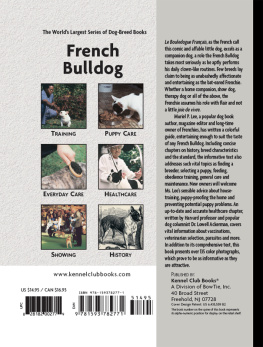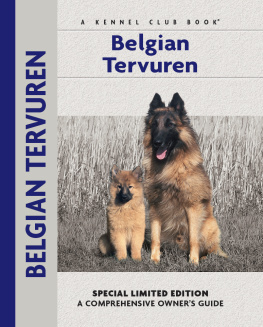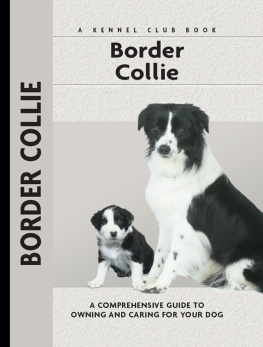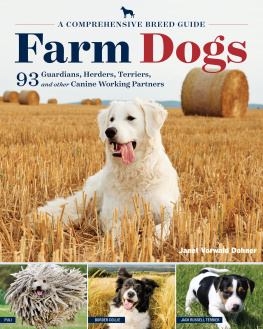Physical Characteristics of the Belgian Sheepdog
(from the American Kennel Club breed standard)
Head: Clean-cut and strong, overall size should be in proportion to the body.
Ears: Triangular in shape, stiff, erect, and in proportion to the head in size. Base of the ear should not come below the center of the eye.
Skull: Top flattened rather than rounded. The width approximately the same but not wider than the length. Stop moderate.

Eyes: Brown, preferably dark brown. Medium size, slightly almond shaped.
Neck: Round and rather outstretched, tapered from head to body, well muscled, with tight skin.
Muzzle: Moderately pointed, avoiding any tendency to snipiness, and approximately equal in length to that of the topskull. The jaws should be strong and powerful.
Nose: Black without spots or discolored areas. The lips should be tight and black.
Teeth: A full complement of strong, white teeth, evenly set. Should not be overshot or undershot. Should have either an even bite or a scissors bite.
Chest: Not broad, but deep. The lowest point should reach the elbow, forming a smooth ascendant curve to the abdomen.
Forequarters: Shoulder long and oblique, laid flat against the body, forming a sharp angle (approximately 90 degrees) with the upper arm. Legs straight, strong and parallel to each other. Bone oval rather than round. Development (length and substance) should be well proportioned to the size of the dog. Pastern medium length, strong, and very slightly sloped.
Feet: Round (cat footed), toes curved close together, well padded. Nails strong and black, except that they may be white to match white toe tips.
Topline: The withers are slightly higher and slope into the back, which must be level, straight, and firm from withers to hip joints.
Tail: Strong at the base, bone to reach hock. At rest the dog holds it low, the tip bent back level with the hock. Cropped or stump tail shall disqualify.
Hindquarters: LegsLength and substance well proportioned to the size of the dog. Bone oval rather than round. Legs are parallel to each other. Thighs broad and heavily muscled. The upper and lower thigh bones approximately parallel to the shoulder blade and upper arm respectively, forming a relatively sharp angle at the stifle joint. The angle at the hock is relatively sharp. Dewclaws, if any, should be removed.
Coat: The guard hairs of the coat must be long, well fitting, straight and abundant. The texture should be a medium harshness. The undercoat should be extremely dense, commensurate, however, with climatic conditions.
Color: Black. May be completely black, or may be black with white.
Size: Males should be 2426 inches in height and females 2224 inches, measured at the withers.
Contents

Meet the black longhaired variety of the Belgian shepherd dog known as the Belgian Sheepdog or Groenendael, and discover the origins and foundation dogs of the variety. See the breeds popularity blossom in its homeland as well as in the US and Canada, the UK and the Continent and the rest of the world.

Understand the talents of the Belgian Sheepdog that make the breed so versatile and successful as a working and guard dog. Are you the right owner for this intelligent, trainable and agile sheepdog? An active, vital dog that requires stimulation and affection from his owner, the Belgian Sheepdog exudes personality and bravery.

Learn the requirements of a well-bred Belgian Sheepdog by studying the description of the breed set forth in the American Kennel Club standard. Both show dogs and pets must possess key characteristics as outlined in the breed standard.

Find out how to locate a well-bred Belgian Sheepdog puppy. Discover which questions to ask the breeder and what to expect when visiting the litter. Prepare for your puppy-accessory shopping spree. Also discussed are home safety, the first trip to the vet, socialization and solving basic puppy problems.

Cover the specifics of taking care of your Belgian Sheepdog every day: feeding for the puppy, adult and senior dog; grooming, including coat care, ears, eyes, nails and bathing; and exercise needs for your dog. Also discussed are the essentials of dog ID, boarding and traveling safely with your dog.

Begin with the basics of training the puppy and adult dog. Learn the principles of house-training the Belgian Sheepdog, including the use of crates and basic scent instincts. Get started by introducing the pup to his collar and leash and progress to the basic commands. Find out about obedience classes and other activities.

By Lowell Ackerman DVM, DACVD
Become your dogs healthcare advocate and a well-educated canine keeper. Select a skilled and able veterinarian. Discuss pet insurance, vaccinations and infectious diseases, the neuter/spay decision and a sensible, effective plan for parasite control, including fleas, ticks and worms.

Know when to consider your Belgian Sheepdog a senior and what special needs he will have. Learn to recognize the signs of aging in terms of physical and behavioral traits and what your vet can do to optimize your dogs golden years.

Step into the center ring and find out about the world of showing pure-bred dogs. Heres how to get started in AKC shows, how they are organized and whats required for your dog to become a champion. Take a leap into the realms of obedience trials, agility, herding events and tracking tests.
K ENNEL C LUB B OOKS B ELGIAN S HEEPDOG
ISBN 13: 978-1-59378-267-2
eISBN 13: 978-1-62187-013-5
Copyright 2007 Kennel Club Books An Imprint of I-5 Press A Division of I-5 Publishing, LLC
3 Burroughs, Irvine, CA 92618 USA
Cover Design Patented: US 6,435,559 B2 Printed in South Korea
All rights reserved. No part of this book may be reproduced in any form, by photostat, scanner, microfilm, xerography or any other means, or incorporated into any information retrieval system, electronic or mechanical, without the written permission of the copyright owner.
Library of Congress Cataloging-in-Publication Data
Next page























